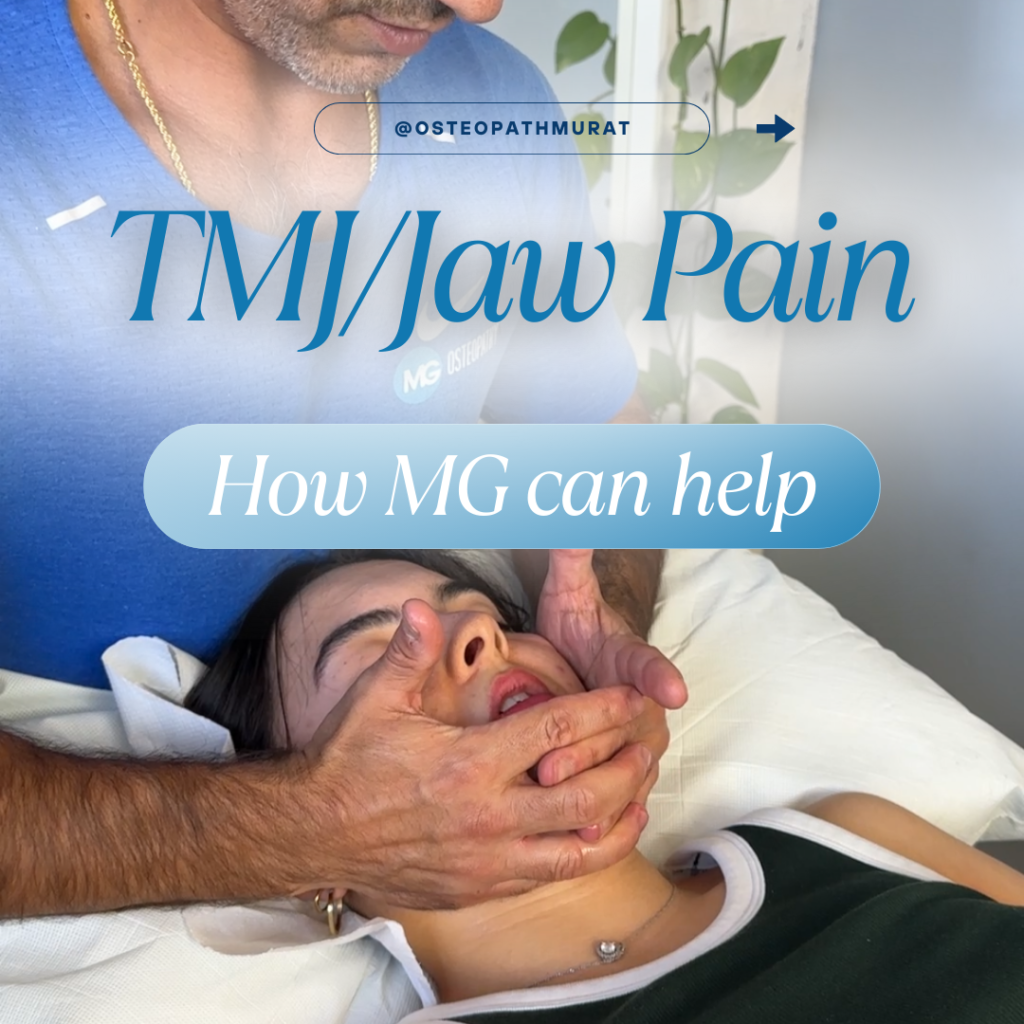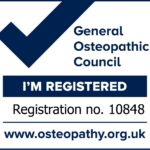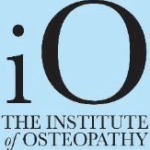Temporomandibular Joint (TMJ) Disorders cause jaw pain, restricted movement, and discomfort in the muscles around the jaw. This joint connects your lower jaw (mandible) to the skull, allowing you to talk, chew, and yawn
What is Osteopathy?
Osteopathy is a hands-on therapy that treats the body’s muscles, joints, and tissues to restore balance and improve function. It focuses on addressing the root causes of pain by enhancing the body’s natural healing processes.
How Osteopathy Can Help Jaw (TMJ) Pain
Osteopathy is effective in treating TMJ pain through:
- Joint Alignment: Gentle manipulation to improve jaw movement.
- Muscle Tension Release: Soft tissue techniques to relax tight jaw muscles.
- Postural Correction: Improving posture to reduce jaw strain.
- Holistic Approach: Treating related areas like neck and shoulders for comprehensive relief.
TMJ Anatomy: Key Structures
The TMJ is a complex hinge joint connecting the lower jaw (mandible) to the skull (temporal bone). It allows for movements like chewing, speaking, and yawning. Key anatomical structures include:
- Mandible (Lower Jaw): This bone forms the lower part of your face and connects to the skull via the TMJ.
- Temporal Bone: Located on the sides of the skull, this bone forms part of the joint socket where the mandible fits.
- Articular Disc: A cushion-like disc made of cartilage between the mandible and temporal bone, which helps absorb shocks and ensures smooth jaw movement.
- Ligaments: These connective tissues stabilize the joint, preventing excessive movement.
- Muscles of Mastication:
- Masseter: A powerful muscle that helps close the jaw.
- Temporalis: Assists in moving the jaw upward and backward.
- Pterygoid Muscles: These control jaw movement from side to side and help in opening and closing
Risk Factors
Factors like teeth grinding, jaw injuries, arthritis, and poor posture can increase the risk of developing TMJ disorders.
If you’re struggling with jaw pain, MG Osteopathy East London can provide the expert care you need to find relief and improve jaw function.
TMJ Disorder Symptoms
Common symptoms include:
- Jaw pain or discomfort around the joint
- Clicking or popping sounds during jaw movement
- Limited mobility or difficulty opening the mouth
- Headaches and ear pain
Pain Management
Treatment often includes:
- Self-care: Using heat/cold packs, eating soft foods, and doing jaw exercises.
- Medical help: Pain relievers, mouthguards for grinding, and splints.
- Physical therapy: Stretching, strengthening, and manual therapy to relieve tension.
How Osteopathy Helps
Osteopathy focuses on restoring the natural balance and mobility of the body’s structures. At MG Osteopathy East London, we use:
- Manual Therapy to relieve muscle tension and improve jaw alignment.
- Dry Needling to target trigger points and reduce muscle tightness.
- Shockwave Therapy for non-invasive pain relief and to promote healing in the affected tissues.
- Exercise Prescription to strengthen muscles and support long-term recovery.
By combining Osteopathy with these advanced therapies, MG Osteopathy provides comprehensive, tailored care for TMJ disorders. If you’re struggling with jaw pain, our expert team can help you find relief and restore function.
Click here to read about our intra-oral jaw treatments





